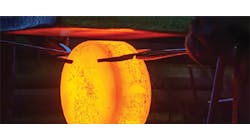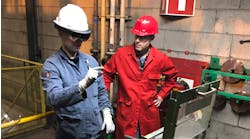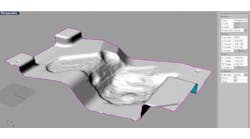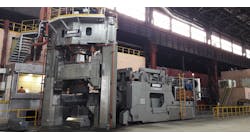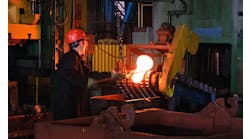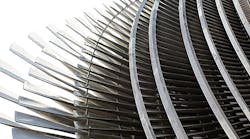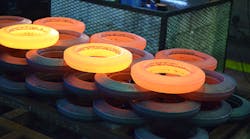A new industrial-academic research will seek to predict the performance of aluminum-lithium alloy parts in jet engines and other critical applications. It will be the fourth project launched by LIFT, the Lightweight Innovations for Tomorrow initiative, established in 2014 as a “manufacturing innovation institute” operated by the American Lightweight Materials Manufacturing Innovation Institute. It coordinates academic and institutional research with likely and/or available industrial partners, with specific development targets. To understand aluminum-lithium alloy performance, LIFT appointed the United Technologies Research Center and the University of Michigan as the lead research partners in a two-year program.
They will undertake advanced computer simulations to predict the performance of aluminum-lithium under operational conditions. Their work also will include process modeling and simulation of the material’s evolution during industrial operations.
Other research participants are Lockheed Martin, Case Western Reserve University, The Ohio State University, and Southwest Research Institute.
Alex Staroselsky, principal research engineer at United Technologies Research Center said, “Any company interested in these alloys may benefit from what we develop, but we are really focused on improving turbine engine components for the aerospace industry.”
Aluminum-lithium alloys are not new: they have been adopted in recent years to form commercial airframe parts, including for the Airbus A380 and A350 and the Boeing 787 Dreamliner. Aerospace manufacturers have adopted the material too, to form fuel tanks spacecraft and rockets for defense systems.
“The future of aviation is being built with aluminum-lithium, and Alcoa is making big moves to capture that demand,” stated chairman and CEO Klaus Kleinfeld in 2014, when opening a new casthouse in Lafayette, IN, specifically for the lighter alloys. It casts round and rectangular ingots for forging, extruding, or rolling. “This state-of-the-art facility positions Alcoa as the world’s premier aluminum-lithium supplier, offering the broadest portfolio of aluminum-lithium components for next generation aircraft.”
Lithium, it is widely noted, is the least dense elemental metal, and when it is alloyed with aluminum it creates a material that has a lower structural mass, but also stronger and more strain-resistant than more standard aluminum alloys, though achieving the latter quality requires careful aging.
According to John Allison, LIFT technical leader for Integrated Computational Materials Engineering, “Earlier aluminum-lithium alloys sometimes had issues with cracking or performing in high temperature environments. The latest generation of these alloys show great improvements in several areas, but we really need more integrated computer models to predict their performance at a number of steps, from their atomic structure right up to a finished component.”
He continued: “Aluminum-lithium alloys often have a microstructure analogous to the grain in wood. It behaves differently when you bend it in one direction rather than another. The unique interdisciplinary team expects to develop what’s called crystal plasticity modeling to predict the final microstructure in an alloy. That, in turn, defines the mechanical properties of the alloy as it’s formed into a part.”
LIFT chief technology officer Alan Taub said the two-year program would identify “the right computational tools” that will make it possible to design lighter jet engine components, “both faster and better.”
